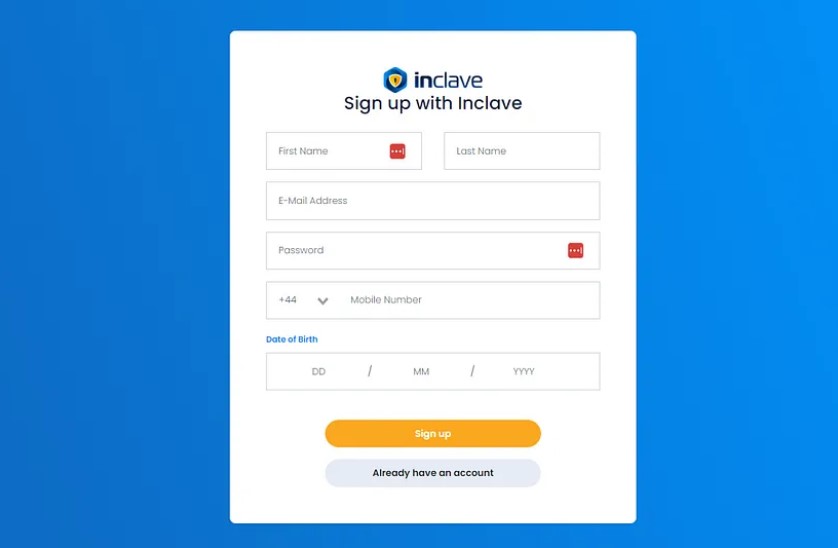Physical Address
304 North Cardinal St.
Dorchester Center, MA 02124
Physical Address
304 North Cardinal St.
Dorchester Center, MA 02124

In today’s digital world, secure login procedures are essential for protecting personal and organizational data. The Inclave platform has emerged as a trusted digital ecosystem that offers users a safe and efficient way to access various services. Whether you’re an individual user or part of a larger organization, understanding how to navigate the Inclave login process is crucial for maintaining security and maximizing the platform’s features. This comprehensive guide will walk you through everything you need to know about Inclave login, from its importance to troubleshooting common issues, ensuring you utilize the platform effectively and securely.
Inclave is a sophisticated platform designed to facilitate secure digital interactions for users across various sectors. It functions as a comprehensive ecosystem, integrating multiple tools and services to streamline digital identity management, document sharing, and data security. Its architecture prioritizes user privacy while providing seamless access to multiple functionalities within a safe environment.
Inclave caters to a broad audience, including:
As digital environments expand, the need for **secure login** mechanisms becomes paramount. Inclave login ensures that only authorized users gain entry, preventing unauthorized access and potential data breaches. This is especially critical for organizations managing confidential information.
By offering a streamlined login process, Inclave reduces barriers for users, enabling quick access to necessary tools and resources without compromising security. Features like single sign-on (SSO) simplify management across multiple services.
The platform incorporates state-of-the-art security features such as two-factor authentication (2FA), biometric options, and real-time monitoring to guard against phishing, hacking attempts, and suspicious activity, emphasizing the importance of Inclave login in safeguarding data.
Accessing the Inclave login portal is straightforward. Visit the official website at www.inclave.com or use the dedicated app if available. Always verify the URL to avoid phishing scams and ensure you are on the legitimate page, especially when entering credentials.
To initiate your login, go to the official Inclave login URL. Ensure the connection is secure, indicated by “https” and a padlock icon in your browser’s address bar. Recognize the legitimate login page by consistent branding, URL accuracy, and security indicators.
For secure password management, consider using trusted password managers and avoid storing passwords in plain text or unsecured files.
Many users benefit from additional security layers:
Within your account settings, you can update details like your contact info and profile preferences to keep your data current.
For security reasons, it’s advisable to regularly update your password. Use a mix of uppercase, lowercase, numbers, and symbols to ensure robustness.
Enhance your account security by configuring security questions and enabling multi-factor authentication options, making unauthorized access more difficult.
A strong password typically includes at least 12 characters, combining letters, numbers, and symbols. Avoid using the same password across multiple sites.
Adding 2FA dramatically reduces the risk of unauthorized access, even if your password is compromised. It is highly recommended for both individual and organizational accounts.
Logging in over public Wi-Fi or unsecured networks can expose your data. Use a VPN when accessing sensitive information remotely.
Check login history and recent activity logs frequently. Immediate action can be taken if any suspicious activity is detected.
After logging in, users access a centralized dashboard displaying their recent activity, notifications, and quick links to various services.
From the dashboard, users can navigate to specific tools like document management, secure messaging, or organizational settings.
Administrators can set permissions and control access levels for different users, ensuring data security within organizational accounts.
If you encounter issues, contact their support team via support page or email. Provide as much detail as possible for quicker resolution.
| Question | Answer |
|---|---|
| What should I do if I forget my Inclave login password? | Click on “Forgot Password” and follow the instructions to reset via email. |
| How do I enable two-factor authentication? | Go to account settings and activate 2FA using your preferred method, such as SMS or an authentication app. |
| My account is locked; how to unlock it? | Contact support or follow the account recovery process on the login page. |
| Is biometric login available for Inclave? | Yes, if your device supports it, you can enable biometric authentication in your account settings. |
Effective management of your Inclave login credentials is vital for maintaining your digital security. By understanding the login process, leveraging security features like two-factor authentication, and following best practices, you can safeguard your data and enjoy seamless access to the platform’s powerful features. Always stay vigilant, monitor your account activity regularly, and reach out to Inclave support whenever necessary to ensure your experience remains smooth and secure.